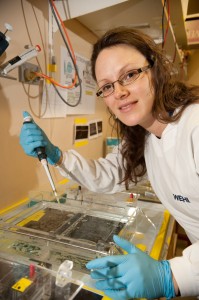
Melbourne scientists gave Australia the first practical bionic ear. Today, over 180,000 people hear with the help of the cochlear implant.
Now, The University of Melbourne is a key member in an Australian consortium developing an advanced bionic eye that will restore vision to people with severe vision loss. This device will enable unprecedented high resolution images to be seen by thousands of people with severely diminished sight, allowing them to read large print and recognise faces.







